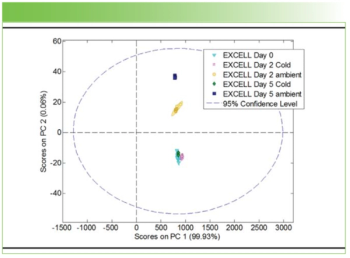
Monitoring Early Embryonic Development Using Raman Spectroscopy
A team of scientists from the Masschusetts Institute of Technology are combining Raman spectroscopy with holo-tomography to monitor early embryonic development.
Arianna Bresci of the Massachusetts Institute of Technology (MIT) in Cambridge, Massachusetts, USA recently held a presentation at SPIE Photonics West on how combining Raman spectroscopy with holo-tomography can help scientists monitor early embryonic development (1).
Bresci’s team used this combined system to monitor events occurring within the first four days of mice embryo development. This time frame is ideal for using stem cells in regenerative medicine. The researchers analyzed pluripotent stem cells, which then split into ectoderm and endoderm cells. While previous studies used traditional omics techniques to study these cells, Bresci and her group used a morpho-molecular study that focused on using microscopy and studying morpho-chemistry. This approach is both quantitative and non-destructive/non-perturbative. Raman vibrational spectroscopy was used for this experiment because it analyzes cells at higher and lower energy modes (with the focus being on the lower-energy region since there is more information to find within this region).
“This technique allows you to have good signal-to-noise ratio measurements in this region,” Bresci said (1). Raman was combined with three-dimensional holotomography, a laser technique meant to image a microscopic and label-free 3D object, such as tissues or cells, in real time (2). This combination was used to study chemical and morphological rearrangements, respectively, of non-perturbed embryonic cells over the exit from pluripotency (3). Studying the cells over 4 days allows the scientists to observe the nature and timeline of morpho-chemical changes that determine cell diversity in embryos. Bresci and her team intend to further this research by training a machine learning model to understand data found through this sort of experiment. The search for rapid and accurate results in this field can help further our understanding of how embryos develop early on.
References
(1) Bresci, A. Merging Label-Free Raman Spectroscopy and Holo-Tomography to Monitor the Morpho-Chemistry of Early Embryonic Development. In SPIE Photonics West, San Francisco, California, USA, January 30–31, 2024.
(2) Greenwood, M. What is Holotomography? AZoNetwork 2018.
(3) Bresci, A. Merging label-free Raman spectroscopy and holotomography to monitor the morpho-chemistry of early embryonic differentiation. SPIE 2024.
Newsletter
Get essential updates on the latest spectroscopy technologies, regulatory standards, and best practices—subscribe today to Spectroscopy.




